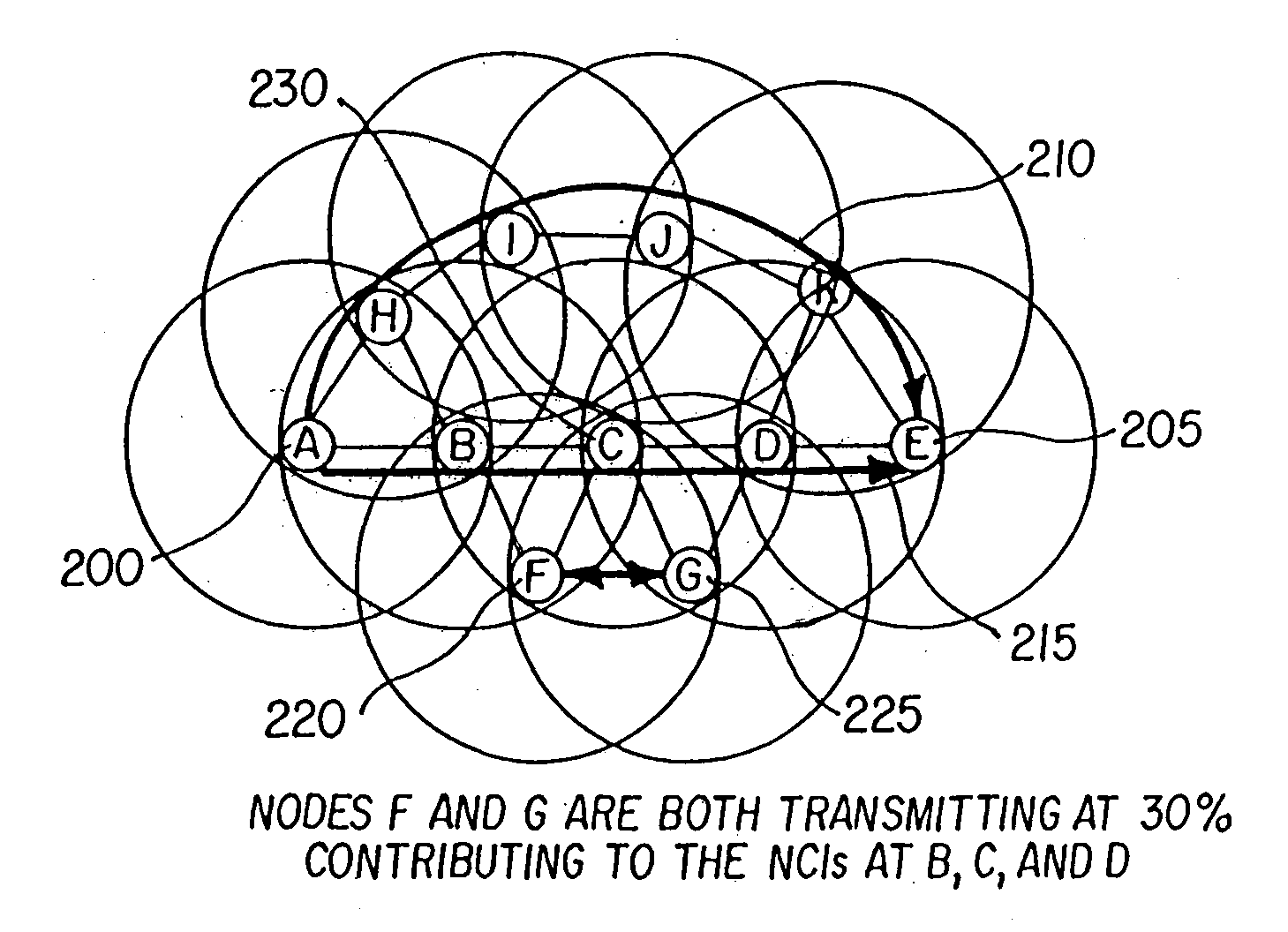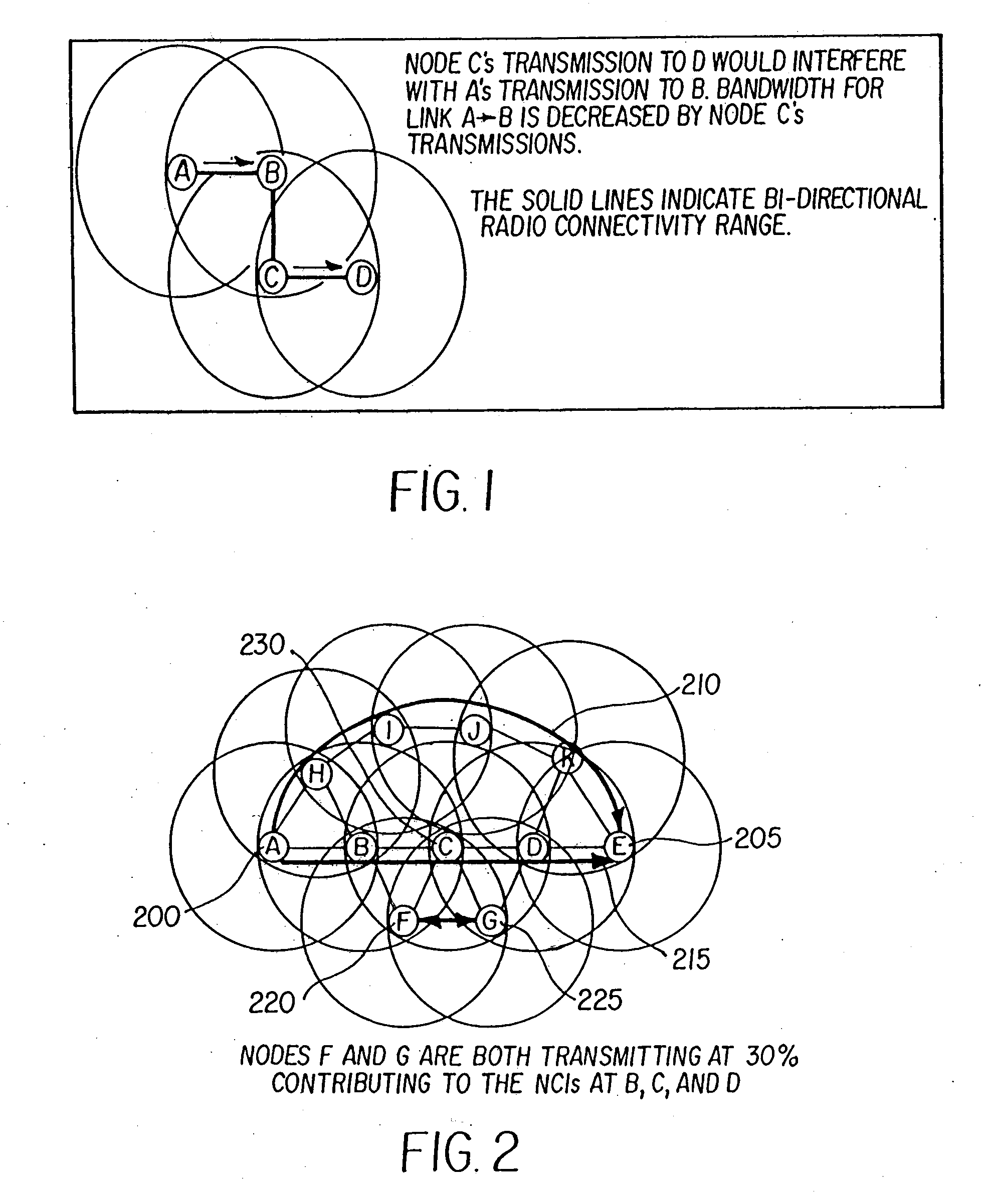INTEGRATING LOCAL CONGESTION AND PATH INTERFERENCE INTO QoS ROUTING FOR WIRELESS MOBILE AD HOC NETWORKS
a wireless mobile ad hoc network and local congestion technology, applied in the field of routing protocols, can solve the problems of consuming the smallest amount of network resources, lowering network efficiency, and routing protocols that need a more complex model
- Summary
- Abstract
- Description
- Claims
- Application Information
AI Technical Summary
Benefits of technology
Problems solved by technology
Method used
Image
Examples
Embodiment Construction
[0020]A very simple explanation of the effects achieved by the present invention will first be discussed with reference to FIG. 2, which illustrates a wireless communication network have a plurality of nodes A through K. As will be readily understood by those skilled in the art, each of the nodes 8 includes a controller 10 coupled to a communications circuit or link 12 as illustrated in FIG. 8. The controller 10, as just a few representative examples, may be implemented utilizing a general purpose programmable processor, application specific integrated circuitry or various combinations of hardware, software and firmware with associated memory. Similarly, the communications link 12 may include various conventional receiver and transmitter circuitry operating at various frequencies and data transmission rates. The solid lines between nodes in FIG. 2 represent existence of bidirectional communications transmissions between the nodes, each of which is assumed to have the same data rate ...
PUM
 Login to View More
Login to View More Abstract
Description
Claims
Application Information
 Login to View More
Login to View More - R&D
- Intellectual Property
- Life Sciences
- Materials
- Tech Scout
- Unparalleled Data Quality
- Higher Quality Content
- 60% Fewer Hallucinations
Browse by: Latest US Patents, China's latest patents, Technical Efficacy Thesaurus, Application Domain, Technology Topic, Popular Technical Reports.
© 2025 PatSnap. All rights reserved.Legal|Privacy policy|Modern Slavery Act Transparency Statement|Sitemap|About US| Contact US: help@patsnap.com



